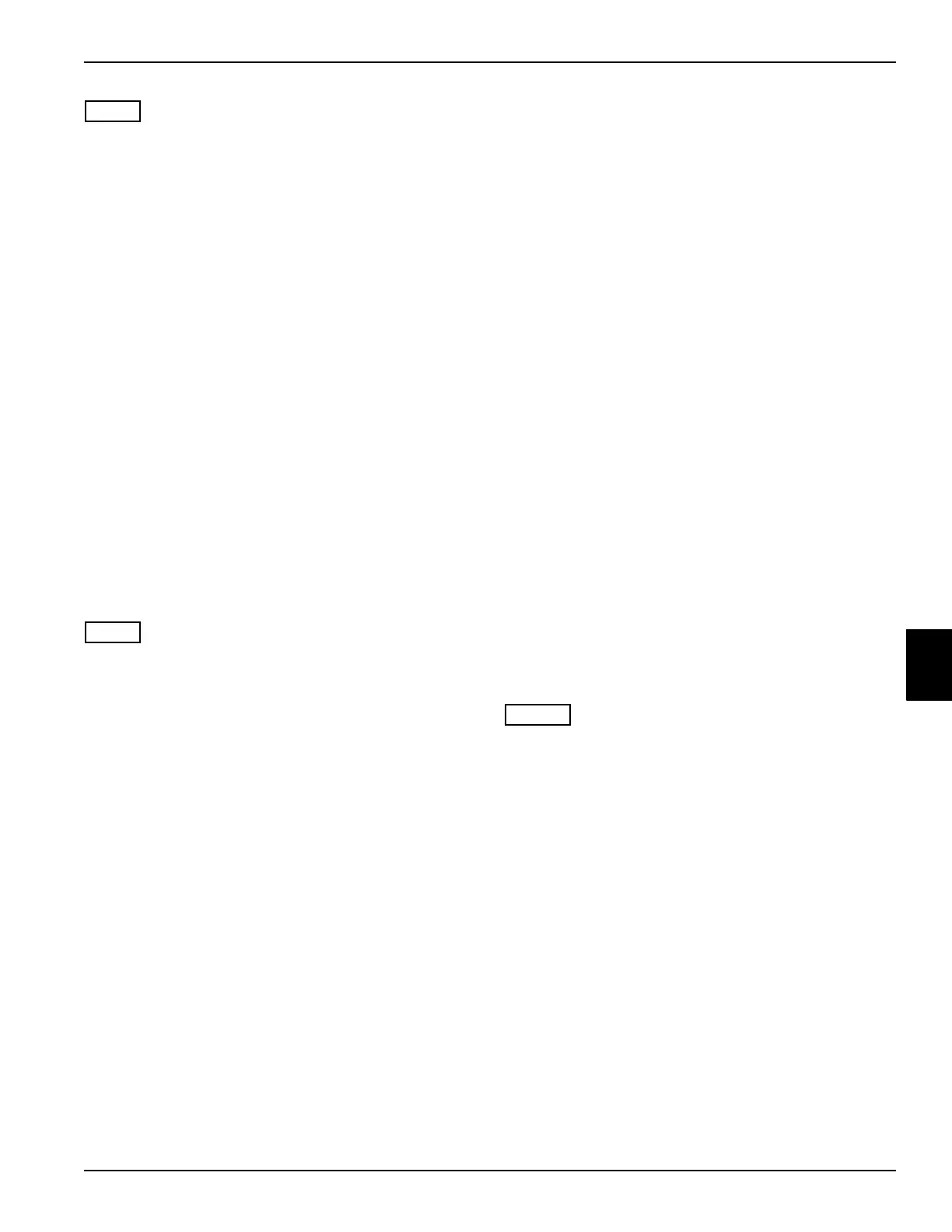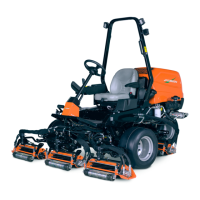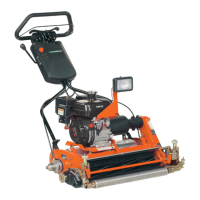HYDRAULICS
4203781 First Edition 6-25
6
NOTE
Figure 6-15 shows left wing lift cylinder. Procedure is
similar for right wing lift cylinder.
5. Disconnect hose (2) from lift cylinder piston end
fitting (1).
6. Install plug in hose (2).
7. Install cap on lift cylinder fitting (1).
8. Remove support from wing cutting unit.
After 15 minutes, does cutting unit drift down?
YES Cylinder is bypassing oil. Replace lift
cylinder. (See “Wing Lift Cylinders” on
page 6-72.)
NO Repeat the test for all of the lift cylinders. If
all cylinders pass test, the problem may be in
the lift valve. Proceed to step 9.
9. Support wing cutting unit.
10. Connect hose (2) to lift cylinder fitting (1).
11. Start the engine and lower cutting units.
12. Stop the engine.
Power Steering Circuit Test
The purpose of this test is to determine if the steering
cylinder and the steering valve are operating properly.
NOTE
Before performing this test, check the steering system for
mechanical binding or damage that may affect the
steering.
1. Operate the machine until hydraulic oil reaches
operating temperature, 120–150° F (49–65° C).
2. With the engine running, turn the steering wheel all
the way to the right and then all the way to the left.
Does the steering wheel continue to turn after full
left or right movement of the steering cylinder?
YES Proceed to step 3.
NO Steering system is not faulty.
3. Stop the engine and remove both hydraulic hoses
from the steering cylinder; plug the hoses and cap
the cylinder ports.
4. Start the engine and turn the steering wheel all the
way to the right and then all the way to the left. Only a
little movement should be evident.
Is the steering wheel hard to turn or does it not
turn?
YES Steering cylinder is faulty; repair or replace
as needed. (See “Steering Cylinder” on
page 7-17.)
With steady pressure in one direction, does the
steering wheel make one complete revolution in
30 seconds?
YES Steering valve is faulty; repair or replace as
needed. (See “Steering Unit” on page 7-9.)
Cutting Unit System Test
The cutting unit system consists of three circuits: the front
cutting unit circuit, the left wing cutting unit circuit, and
the right wing cutting unit circuit. The front cutting unit
circuit consists of the front cutting unit pump, front deck
valve, right front cutting unit motor, center front cutting
unit motor, and left front cutting unit motor. The left wing
cutting unit circuit consists of the left wing cutting unit
pump, left deck valve, left wing inside cutting unit motor,
and left wing outside cutting unit motor. The right wing
cutting unit circuit consists of the right wing cutting unit
pump, right deck valve, right wing inside cutting unit
motor, and right wing outside cutting unit motor. This test
determines if one of the cutting unit motors is faulty. An
instrument test must be performed to isolate the
performance of the cutting unit pumps and deck valves.
NOTES
• Perform test on only one cutting unit motor at a time.
• The case drain on a hydraulic motor is used to return
lubrication or bypassed hydraulic oil back to the
hydraulic tank.
1. Operate the machine until hydraulic oil reaches
operating temperature, 120–150° F (49–65° C).
2. Stop the engine and remove the key.
3. Bypass the seat switch.
4. Remove the case drain hose from the cutting unit
motor. Immediately plug the hose.
5. Position a drain pan with a minimum capacity of 1 gal
(3.8 L) near the cutting unit motor.
6. Install a separate hose on the case drain fitting and
place the free end in the container. Secure the hose
to prevent spills.

